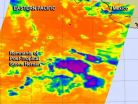(Press-News.org) WASHINGTON -- The U.S. should significantly reform the federal system for financing physician training and residency programs to ensure that the public's $15 billion annual investment is producing the doctors that the nation needs, says a new report by the Institute of Medicine. Current financing -- provided largely through Medicare -- requires little accountability, allocates funds independent of workforce needs or educational outcomes, and offers insufficient opportunities to train physicians in the health care settings used by most Americans, the report says.
All medical school graduates must complete at least one year of "graduate medical education," or residency training, to become licensed to practice. Board certification in a specialty often requires three to seven years of training. Medicare and Medicaid provide more than 90 percent of federal funding to support physician residency training, with Medicare providing $9.7 billion per year.
Public financing of this training should remain at its current level for now, but Congress should amend Medicare laws and regulations to move to an accountable, modernized financing system over the next decade that rewards performance and spurs innovation, said the committee that wrote the report. Continued Medicare funding should be contingent on its demonstrated value and contribution to the nation's health needs. Although public funding also comes from other federal and state sources, the committee focused primarily on Medicare because as the largest funder, it provides the most leverage.
"America's health care system is undergoing profound change as a result of new technologies, and the recent implementation of the Affordable Care Act will further increase the focus on primary and preventive care," said Gail Wilensky, co-chair of the committee, economist and senior fellow at Project HOPE, and former administrator of the Centers for Medicare and Medicaid Services. "It's time to modernize how graduate medical education is financed so that physicians are trained to meet today's needs for high-quality, patient-centered, affordable health care."
For decades, teaching hospitals have received the majority of Medicare's funding for physician training, and these hospitals control how the funding is spent. Funds are distributed through complicated formulas linked to the volume of Medicare patients treated. The funding formulas discourage training at clinics or community-based settings where most people now seek care, including children's hospitals and other institutions that care for non-elderly patients. Several surveys indicate that recently trained physicians in some specialties have difficulty performing simple office-based procedures or managing routine conditions, the report says.
Lack of research makes basic questions about the costs, effectiveness, or outcomes of the training programs "unanswerable," the committee said, and teaching hospitals are only required to report data used to calculate funding amounts. Physician training programs must meet accreditation and certification standards, but antitrust and fair trade prohibitions preclude accreditors from addressing broader national objectives such as the makeup of the physician workforce or the geographic distribution of resources.
The mix of available physician training slots may be more driven by the needs or priorities of individual teaching hospitals rather than U.S. health care needs, the report says. Between 2003 and 2013, for example, there was a disproportionate increase of physicians being trained as specialists despite a greater demand for generalists. Training opportunities are highly concentrated in specific geographic regions and urban areas, and the training system is not increasing the number of physicians willing to locate to rural areas or treat other underserved populations.
Some stakeholders warn of a looming physician shortage and advocate for additional Medicare funding for residency and fellowship slots, but such increases would do little to ensure a proper balance of specialties or adequate staffing of changing care settings, particularly among different geographic regions. The report also notes that residency training has grown more than 17 percent between 2002 and 2012 even without additional government funding.
Instead, Medicare funding for physician training should remain at its current level, but to ensure strategic, accountable investments, the U.S. Department of Health and Human Services should establish a two-part governance infrastructure, the report says. A Graduate Medical Education Policy Council -- housed within the HHS Secretary's Office -- should oversee policy and decision making, and an office within the Centers for Medicare and Medicaid Services should oversee fund distribution. Medicare support should be provided through two distinct funds -- an operational fund to finance ongoing residency training activities and a transformational fund to finance new training slots where needed, provide technical support, and support much needed research and innovative pilot programs.
To encourage training at a variety of sites, funds should be distributed directly to the organizations that sponsor physician training programs including hospitals, clinics, and universities, and the payment methodology should be replaced with a single national, per-resident amount. Because careful planning will be required to reform such a complex system and avoid harm, the committee suggested a 10-year transition period to fully implement its recommendations, followed by a reassessment of the need for continuing Medicare funding.
INFORMATION:
The study was funded by the Josiah Macy Jr. Foundation, American Board of Internal Medicine Foundation, Aetna Foundation, California Endowment, California HealthCare Foundation, Commonwealth Fund, East Bay Community Foundation, Jewish Healthcare Foundation, Kaiser Permanente Institution for Health Policy, Missouri Foundation for Health, Robert Wood Johnson Foundation, UnitedHealth Group Foundation, Health Resources and Services Administration, and the U.S. Department of Veterans Affairs. Established in 1970 under the charter of the National Academy of Sciences, the Institute of Medicine provides independent, objective, evidence-based advice to policymakers, health professionals, the private sector, and the public. The National Academy of Sciences, National Academy of Engineering, Institute of Medicine, and National Research Council make up the National Academies. A committee roster follows.
Contacts:
Molly Galvin, Senior Media Relations Officer
Chelsea Dickson, Media Relations Associate
Office of News and Public Information
202-334-2138; e-mail news@nas.edu
http://national-academies.org/newsroom
Twitter: @NAS_news and @NASciences
RSS feed: http://www.nationalacademies.org/rss/index.html
Flickr: http://www.flickr.com/photos/nationalacademyofsciences/sets
Copies of Graduate Medical Education That Meets the Nation's Health Needs are available from the National Academies Press on the Internet at http://www.nap.edu or by calling tel. 202-334-3313 or 1-800-624-6242. Reporters may obtain a copy from the Office of News and Public Information (contacts listed above).
INSTITUTE OF MEDICINE
Board on Health Care Services
Committee on the Governance and Financing of Graduate Medical Education
Donald M. Berwick, M.D., M.P.P., FRCP (co-chair)
Former President and CEO
Institute for Healthcare Improvement, and
Former Administrator
Centers for Medicare and Medicaid Services
Newton, Mass.
Gail R. Wilensky, Ph.D. (co-chair)
Senior Fellow
Project HOPE
Bethesda, Md.
Brian Alexander, M.Ph., M.D.
Director
Neuro-radiation Oncology Program
Dana-Farber Cancer Center and Brigham and Women's Hospital
Boston
David A. Asch, M.D., M.B.A.
Executive Director
Penn Medicine Center for Health Care Innovation
University of Pennsylvania
Philadelphia
David Asprey, Ph.D., PA-C
Professor and Chair
Physician Assistant Studies and Services, and
Assistant Dean
Office of Student Affairs and Curriculum
Carver College of Medicine
University of Iowa
Iowa City
Alfred O. Berg, M.D., M.Ph.
Professor
Department of Family Medicine
School of Medicine
University of Washington
Seattle
Peter Buerhaus, Ph.D., R.N. FAAN
Valere Potter Distinguished Professor of Nursing, and
Director, Center for Interdisciplinary Health Workforce Studies
Institute for Medicine and Public Health
Vanderbilt University Medical Center
Nashville, Tenn.
Amitabh Chandra, Ph.D.
Director of Health Policy Research, and
Professor of Public Policy
Kennedy School of Government
Harvard University
Cambridge, Mass.
Denice Cora-Bramble, M.D., M.B.A., FAAP
Chief Medical Officer and Executive Vice President
Ambulatory and Community Health Services
Children's National Health System
Washington, D.C.
Michael J. Dowling, M.S.W.
President and CEO
North Shore-Long Island Jewish Health System
Great Neck, N.Y.
Kathleen A. Dracup, D.N.Sc., R.N., M.S.N.
Dean Emeritus and Professor
School of Nursing
University of California
San Francisco
Anthony E. Keck, M.Ph.
Director
South Carolina Department of Health and Human Services
Columbia
Octavio N. Martinez Jr., M.D., M.Ph., M.B.A.
Executive Director
Hogg Foundation for Mental Health
Austin, Texas
Fitzhugh Mullan, M.D.
Murdock Head Professor of Medicine and Health Policy
Department of Health Policy
George Washington University
Washington, D.C.
Roger Plummer
Telecommunications Industry Executive (retired)
Chicago
Deborah E. Powell, M.D.
Dean Emeritus and Professor of Laboratory Medicine and Pathology
University of Minnesota Medical School
Minneapolis
Barbara Ross-Lee, M.A.T, D.O., FACOFP
Vice President for Health Sciences and Medical Affairs
New York College of Osteopathic Medicine
New York Institute of Technology
Old Westbury
Glenn D. Steele Jr., M.D., Ph.D.
President and CEO
Geisinger Health System
Danville, Pa.
Gail L. Warden, M.H.A.
President Emeritus
Henry Ford Health System
Detroit
Debra Weinstein, M.D.
Vice President for Graduate Medical Education
Partners HealthCare System Inc.
Boston
Barbara O. Wynn, M.A.
Senior Policy Analyst
RAND Corp.
Arlington, Va.
STAFF
Jill S. Eden
Study Director
$15 billion annual public funding system for doctor training needs overhaul, says IOM
2014-07-29
ELSE PRESS RELEASES FROM THIS DATE:
A new way to make microstructured surfaces
2014-07-29
A team of researchers has created a new way of manufacturing microstructured surfaces that have novel three-dimensional textures. These surfaces, made by self-assembly of carbon nanotubes, could exhibit a variety of useful properties — including controllable mechanical stiffness and strength, or the ability to repel water in a certain direction.
"We have demonstrated that mechanical forces can be used to direct nanostructures to form complex three-dimensional microstructures, and that we can independently control … the mechanical properties of the microstructures," says ...
NASA sees warmer cloud tops as Tropical Storm Hernan degenerates
2014-07-29
Tropical Storm Hernan degenerated into a remnant low pressure area on July 29. Infrared imagery from NASA's Aqua satellite revealed cloud tops were warming as the storm weakened.
The Atmospheric Infrared Sounder or AIRS instrument aboard Aqua gathered infrared data on a quickly weakening Hernan on July 29 at 5:11 a.m. EDT. The data was then made into a false-colored image at NASA's Jet Propulsion Laboratory in Pasadena, California. The AIRS image showed small, fragmented areas of a few powerful thunderstorms with high, cold cloud tops in Tropical Storm Hernan as it continued ...
Superconductivity could form at high temperatures in layered 2-D crystals
2014-07-29
An elusive state of matter called superconductivity could be realized in stacks of sheetlike crystals just a few atoms thick, a trio of physicists has determined.
Superconductivity, the flow of electrical current without resistance, is usually found in materials chilled to the most frigid temperatures, which is impractical for most applications. It's been observed at higher temperatures–higher being about 100 kelvin or minus 280 degrees below zero Fahrenheit–in copper oxide materials called cuprate superconductors. But those materials are brittle and unsuitable for fabricating ...
Autistic brain less flexible at taking on tasks, Stanford study shows
2014-07-29
The brains of children with autism are relatively inflexible at switching from rest to task performance, according to a new brain-imaging study from the Stanford University School of Medicine.
Instead of changing to accommodate a job, connectivity in key brain networks of autistic children looks similar to connectivity in the resting brain. And the greater this inflexibility, the more severe the child's manifestations of repetitive and restrictive behaviors that characterize autism, the study found.
The study, which will be published online July 29 in Cerebral Cortex, ...
Diet affects men's and women's gut microbes differently
2014-07-29
The microbes living in the guts of males and females react differently to diet, even when the diets are identical, according to a study by scientists from The University of Texas at Austin and six other institutions published this week in the journal Nature Communications. These results suggest that therapies designed to improve human health and treat diseases through nutrition might need to be tailored for each sex.
The researchers studied the gut microbes in two species of fish and in mice, and also conducted an in-depth analysis of data that other researchers collected ...
Scientists separate a particle from its properties
2014-07-29
Researchers from the Vienna University of Technology have performed the first separation of a particle from one of its properties. The study, carried out at the Institute Laue-Langevin (ILL) and published in Nature Communications, showed that in an interferometer a neutron's magnetic moment could be measured independently of the neutron itself, thereby marking the first experimental observation of a new quantum paradox known as the 'Cheshire Cat'. The new technique, which can be applied to any property of any quantum object, could be used to remove disturbance and improve ...
The quantum Cheshire cat: Scientists separate a particle from its properties
2014-07-29
The Quantum Cheshire Cat: Can a particle be separated from its properties? On July 29, the prestigious journal, Nature Communications, published the results of the first Cheshire Cat experiment, separating a neutron from its magnetic field, conducted by Chapman University in Orange, CA, and Vienna University of Technology.
Chesire Cat"Well! I've often seen a cat without a grin," thought Alice in Wonderland, "but a grin without a cat! It's the most curious thing I ever saw in my life!" Alice's surprise stems from her experience that an object and its property cannot exist ...
The quantum Cheshire cat
2014-07-29
The Cheshire Cat featured in Lewis Caroll's novel "Alice in Wonderland" is a remarkable creature: it disappears, leaving its grin behind. Can an object be separated from its properties? It is possible in the quantum world. In an experiment, neutrons travel along a different path than one of their properties – their magnetic moment. This "Quantum Cheshire Cat" could be used to make high precision measurements less sensitive to external perturbations.
At Different Places at Once
According to the law of quantum physics, particles can be in different physical states at ...
Major turtle nesting beaches protected in 1 of the UK's far flung overseas territories
2014-07-29
But on the remote UK overseas territory of Ascension Island, one of the world's largest green turtle populations is undergoing something of a renaissance.
Writing in the journal Biodiversity and Conservation, scientists from the University of Exeter and Ascension Island Government Conservation Department report that the number of green turtles nesting at the remote South Atlantic outpost has increased by more than 500 per cent since records began in the 1970s. As many as 24,000 nests are now estimated to be laid on the Island's main beaches every year, making it the second ...
Could summer camp be the key to world peace?
2014-07-29
According to findings from a new study by University of Chicago Booth School of Business Professor Jane Risen, and Chicago Booth doctoral student Juliana Schroeder, it may at least be a start.
Risen and Schroeder conducted research on Seeds of Peace, one of the largest peacebuilding programs that brings together teenagers from conflict regions, including Israelis and Palestinians, every year for three weeks in rural Maine. They tracked participants' feelings and attitudes toward the other national group for three years with three separate cohorts of campers. They found ...




